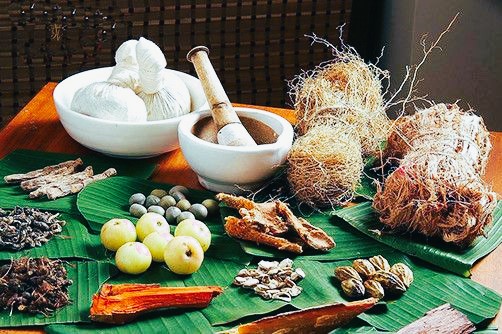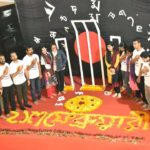The Indian sub continent has 29 states and 7 union territories and each of that has its unique cultural values. The State of Kerala sets an example to that. Their culture or the lifestyle of people which is linked to religions, festivities, cuisines, languages and traditions are more unique when compare to other parts of India. It is not only blessed with a rich culture, but also with abundance of natural resources such as forests, lakes, lagoons, waterfalls etc. That colorful and pleasant nature attracts millions all around the world.
When we turn our attention on Sri Lanka, the beautiful island nation is blessed with so many resources and depicts its rich culture in every aspect. Sri Lanka is a highly popular destination for the topic of ‘tourism’ globally. Reasons for that are its diversified culture, pageantries that manifest its cultural activities, mouthwatering cuisines, beautiful nature that gives different climatic conditions in places such as Nuwara Eliya, Jaffna, Trincomalee etc. When the attention is paid to the similarities between these two stunning holiday destinations, we can identify how these two cultures of these two different nations blend with each other perfectly.
Festivals
Festivals are a part of every culture. In Kerala, they celebrate festivals such as Onam, Vishu and Thiruwathirai. Onam is celebrated during the time of harvest each year. Making flower carpets, and preparing delicious Kerala-style meals are part of this colourful celebration. Paddle boat racing known as Vallam Kali and playing in swings are some of the significant activities that can be witnessed during this season. Vishu is celebrated by the Hindu community in Kerala. It is considered as their New Year. They believe that God gives prosperity throughout the year by way of presenting vegetables and fruits as offering to God. As a ritual in every festival, scrumptious Kerala dishes are served and fire crackers lit everywhere during this festival season.
In the Sri Lankan festivities such as the Sinhala/Tamil New Year, Thai Pongal, Deepavali reflect spiritual importance. During the Sinhala and Tamil New Year, the first yield from the harvest from the paddy fields is kept aside to be offered to God. By doing that, the people believe it would bring prosperity throughout the year. Sweet meats are an indispensable part of this season and kevum, kokis, asmi (all these sweet meats made out of rice flour, green gram, sugar, oil etc.) are served when relatives, friends, neighbours and villagers meet for a fellowship. Deepavali and Thai Pongal are also celebrated by Hindu community in Sri Lanka and rituals are identical to the Indian culture. We could see that both the cultures and spiritual custom in Kerala and Sri Lanka have a plenty of similarities.
Cuisines
The cuisines prepared in both these parts of the different countries are mouthwatering and undoubtedly scrumptious. Sri Lanka and Kerala are very popular across the world for their unique meal preparations. Fish dominates in both Sri Lankan and Keralite cuisines. In Kerala, Malabar matthi, a curry made with fish, onions and vegetables is a favourite dish equally among the locals and visitors. They prepare a simple red fish curry with a paste of ginger, garlic, curry leaves, mustard seeds etc. Oil sardines or the kutoombam pularthi is equally popular, as it gives livelihood and nutritional value to the people. It is the most popular fish species in Kerala. Both the inland fisheries, as state is endowed with fresh water resources and marine fishery, as it plays a major role in revenue generation are some of the highlights in Kerala.
As an island surrounded by the ocean and blessed with many inland water resources, Sri Lanka is a proud nation with more than 200 species of fish. Sail fish, Spanish mackerel are mostly preferred by the locals. The Sri Lankans have their own recipes in preparing dishes using fish. One cannot hide the truth that “Malu Ambulthiyal ‘(a thick fish curry cooked with pepper, curry powder, curry leaves, tamarind or garcinia) is one of the most sought-after cuisines among the locals. Major cities such as Galle, Jaffna and Trincomalee, there are different additions to the existing recipes. Anyhow both Kerala and Sri Lanka leave an unforgettable trail when it comes to experiencing their cuisines. Not only those, they have so many other cuisines in common. Unniappam which is made of rice flour, juggery, banana, coconut and deep-fried in oil is another typical sweetmeat in Kerala, which similar to the ‘kevum’ in Sri Lanka. To make ‘kevum’ in Sri Lanka, they use treacle instead of juggery when making unniappam. ‘Appam’ the highly popular Keralite breakfast is called ‘aappa’ in Sri Lanka. They use exactly the same ingredients in both these places. It is made with rice flour batter with thin and crispy edges and soft spongy center. As mentioned before, the famous breakfast appam is served with stews in Kerala. In Sri Lanka it is served with ‘seeni sambol’ or ‘ambul thiyal’. Idiappam or string hoppers is another common food in Kerala and Sri Lanka. Kerala’s ‘puttu’ or Sri Lanka’s ‘pittu’ are also prepared with rice flour mixed with freshly scraped coconut and steamed until its colour turn whitish or brownish. The important factor is that, these delicious cuisines are healthy and nutritious. Almost all the dishes are prepared with rice flour are rich in proteins and carbohydrate. These dishes with variety of fish and vegetable curries and gravies make a divine combination in both the places.
Coconut
Even though it is yet unanswered the origin of coconut, both Kerala and Sri Lanka are rich in coconut. Whenever we see a picture of the beautiful Keralite shores, coconut trees are inseparable from their surroundings. Statistics reveal that 40% of the land is covered with coconut trees. The coconut industry is a major revenue earner that boosts the economy. These characteristics also can be witnessed in Sri Lanka. Coconut is one of the three main exports by Sri Lanka to the rest of the world. The most common factor is that coconut dominates in daily cooking in both Kerala and Sri Lanka. Whether it could be coconut oil, scraped or desiccated coconut, coconut milk or any other form, dishes are heavily infused with the coconut flavor and that gives unique and rich taste to the food.
Banana
In Malayalam language, banana is called ‘vaazha’. Because of the tropical-grown fruits like bananas are in abundance in both Kerala and Sri Lanka. Palayam kodan, Njalipooven, Ethan or Nenthiram, Morries, Kappa vaazha or red banana are famous varieties in Kerala. Ambul kesel, Seeni kesel, Ambun are some of the few varieties grown in Sri Lanka.
Spices
The State of Kerala is also known as the spice garden of India, where most of the edible spices are grown here. Keralites tend to keep things subtle when it comes to making dishes using local spices. Pepper corns, cardamom, cloves, nutmeg, cinnamon, cumin, coriander, mustard seeds, tamarind are a few varieties grown in Kerala.
Meanwhile, Sri Lanka had been invaded by three European countries in the long past, reasoning to get the authority of spices. So, it signifies the importance that they have given to the spices in Sri Lanka. According to the records, in the year 1270 cinnamon was native to Sri Lanka. Even today, 90% of cinnamon demand of the world is catered by Sri Lanka. Not only cinnamon, but also spices such as Sri Lankan cardamom, pepper, nutmeg and cloves are popular worldwide and still they pump in a significant revenue to the country by way of exporting these rare spices.
Art
Mask-making industry is another highly popular cultural similarity in Kerala and Sri Lanka. Ambalangoda is the city which is famous for making various wooden masks. In religious rituals, during ancestor worship, these masks become inevitable in Sri Lanka. These rituals are commonly known as ‘tovil’. These ‘tovils’ are still performed in certain parts of the country even today. As the timber that is being used to make these handy crafts have to be durable, they use tree varieties such as Rukkattana, Diyakandura for the purpose. Mask-making or this unique craftsmanship has been adored as a heritage that is continued for generations. It is done among same families, because this tradition is limited to a few people.
In Kerala, the same kind of mask-making culture is widespread and they use these for a dancing pageant known as ‘kummattikali’. In this, the performers wear vividly painted colorful masks for the dance and go from house-to-house entertaining people. This kummattikali dance is performed during the Onam festive season. In Kerala mask makers use jak fruit tree, coral tree as raw material to carve these masks.
Conclusion
Going through these cultural factors – one by one – helps one to get a clear idea about the similarities prevalent between these two beautiful places, Kerala and Sri Lanka. Not only the above factors, there are climatic conditions, abundantly blessed nature, physical appearance of the people, elephants and the ‘perahara’ portray the similarities of the two cultures. Even though these two different places/country in the world, these facts and the beautiful outlook give us a feeling that there is a strong link between them.
Kasuni Amaya
(Kasuni Amaya is a dedicated researcher based in Colombo, Sri Lanka, specializing in cultural relations with a specific focus on South Asian cultural affairs. With a profound interest in exploring the intricacies of cultural dynamics, Kasuni has dedicated her career to studying and understanding the diverse cultural landscapes of the region. Kasuni’s passion for cultural affairs led her to pursue a Bachelor of Arts (Special) in Mass Communication at the University of Sri Jayewardenepura. During her academic journey, she developed a deep understanding of the role of mass communication in shaping cultural interactions and fostering cross-cultural understanding.)
References
Bal, H. (2022). Cultural studies. Researchgate.
Balachandran, P. (2006). Tracing the sri lanka – Kerala link. Hindustani times.
Handapango, W. (2016). Caught between extremes:the culture and economics of traditional mask art in contemporary Sri lanka. Journal of cultural Geography.
Moorthy, s. (2012). Ari Lanka and India: cultural and religious ties. Observer reserach foundation.
Thadathil, G. (2017). History, culture, environment and development: Keralaand Darjeeling. Researchgate.
Thanikkad, J. (2020). Cultural tourism products in kerala .




